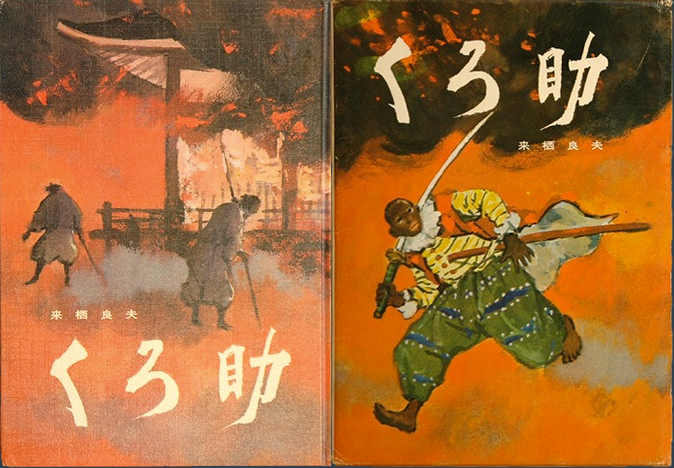
Historical stories for children as a genre was established after 1960s. Kuro-suke, by Kurusu Yoshio (1916 – 2001), is considered a masterpiece about a black young man and the Honnôji Revolt, and is one of the works that contributed to the development of the historical genre.
According to the book, which is a fictional account of the actual history, in the late sixteenth century, when Oda Nobunaga is holding sway over Japan, a black young man is sent to Nobunaga as a gift from a missionary. The story portends that Japanese people at that time do not know about black people, and they are very surprised. The young man is named Kurusan Yasuke, or Kuro-suke, and is made an attendant of Nobunaga. Kuro-suke is cheerful and hard working. He follows Nobunaga’s willful riding, and performs tricks when he is asked. Nobunaga and the household members come to be fond of him. The notion that Kuro-suke used to be a slave and knows no other way to survive than to be meet other people’s expectations and work hard, is very much a trope from contemporary history guided by the lens of american racism. When Akechi Mitsuhide attacks Nobunaga at Honnôji Temple, Kuro-suke fights bravely. Nobunaga kills himself, and Kuro-suke is saved and sent to Namban temple. When he sleeps that night, he dreams of his parents in Africa. Kuro-suke cries silently.
The idea of a black man working for Nobunaga is was considered quite unique at the time. Kuro-suke’s effort as a man of Nobunaga is considered a bit odd and humorous, and his fate is painful. The mind of a young man in a foreign country is well described. Lively characters and the setting in Azuchi, where European culture could be seen, are attractive, too. Illustrations by Minoda Genjirô enrich the world of this story.
Kuro-suke was praised for its originality and high quality when it received the Japanese Association of Writers for Children Prize in 1969.
Research we have done about the period with Japanese Scholars debuncts this notion that Yasuke was a slave at any point.



2 Responses